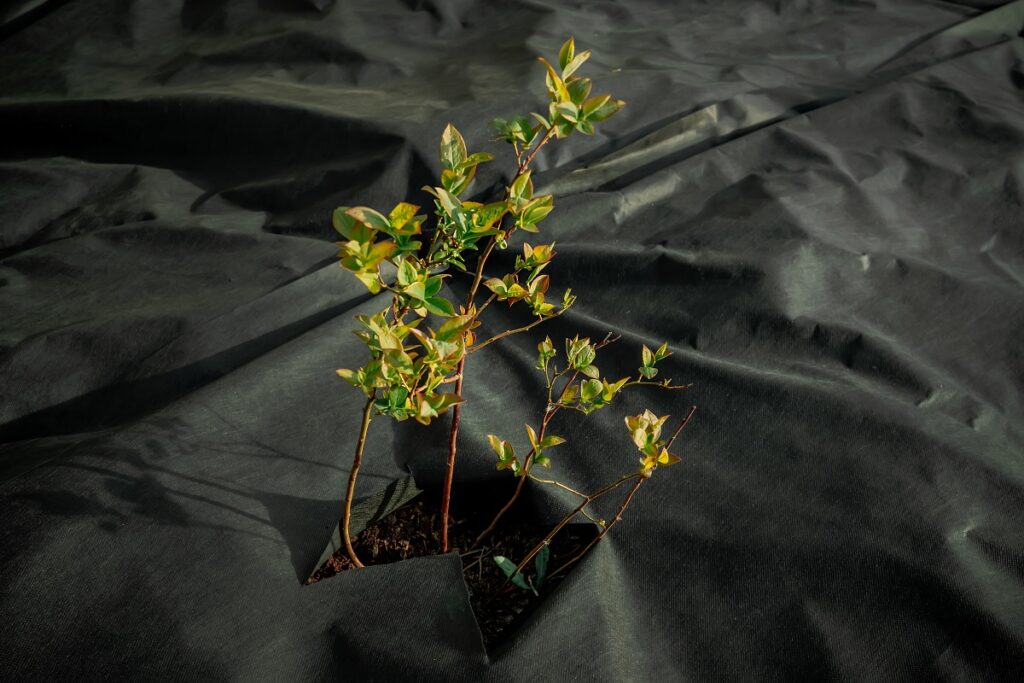
Preparing the soil for the agroforestry is a key step to ensure healthy plant growth. First of all, the area should be thoroughly cleaned, removing all weeds, stones and plant debris. It is also a good idea to dig the soil about 20–30 cm deep to improve the soil structure and make it easier for plant roots to penetrate the substrate. The soil should then be levelled and, if necessary, enriched with compost or suitable fertilisers to give the plants the best conditions for growth.
Once the soil is adequately prepared, the laying of the agro-textile can begin. Many gardeners wonder what to do first. agro-fibre or plants? The answer is: agro-textile first. This is what will ensure uniform growing conditions and limit the growth of weeds. Remember that preparing the soil is not only about aesthetics, but also an investment in the health of your garden.
Choosing the right agro-textile is a step that has a key impact on the health and appearance of your garden. There are different types of agro-textile available on the market, which differ in grammage, colours and properties. The most common are white and black agro-textiles. White nonwoven agro textiles are primarily used to cover plants, which protects them from frost and excessive sunlight. Black agro-textiles are mainly used for mulching the soil, as they are excellent at suppressing weed growth while preventing the soil from heating up.
When choosing a nonwoven agro-textile, it is worth paying attention to its weight — the higher the weight, the stronger the material. The higher the weight, the stronger the fabric. 50–100 g/m² is recommended for mulching, while a lighter weight of 17–30 g/m² is suitable for covering plants. Remember that the right choice of agro-textile depends on the specific needs of your garden. Check out the range of nonwoven fabrics on the nonwovens page to find the perfect product for your requirements. Thanks to a well-chosen agro-textile, your plants will have optimal conditions for growth and your garden will be free of unwanted weeds.
To properly lay the agro-textile on the prepared soil, start by carefully measuring and cutting the material into suitable pieces. After cleaning and levelling the ground, lay the nonwoven agro-textile over the entire surface area, remembering to overlap it by about 10–20 cm for better protection against weeds. When installing the nonwoven agro-textile, it is important to fix it firmly to the ground to prevent the material from moving.
Use special garden pins or anchors for fixing, which you should drive into the ground every 50–100 cm. Remember to fasten the fleece particularly carefully at the edges and joints. After spreading the nonwoven fabric, cut holes in the material where you plan to plant the plants — these holes should be matched to the size of the seedlings so as not to damage the roots. This will give you a perfectly prepared surface where your plants will have optimal growing conditions. Choose the right type of agro-woven fabric to enjoy a healthy and aesthetically pleasing garden.
Planting plants on agro-textile requires proper techniques and care to ensure the best growing conditions for the plants. Once the soil has been prepared and the agro-textile has been laid, it is time to start creating holes for the young plants. Depending on the type and size of the seedlings, the incisions in the agro-textile should be carefully made so as not to damage the material or the roots of the plants. It is best to choose the cross method, which allows you to flexibly adapt the hole to the size of the plant.
Practical tips for planting crops on agro-textiles:
These techniques make planting plants on agroforestry simpler, and working well together will result in an aesthetically pleasing and healthy garden.
There are many benefits to using agro-textiles in the garden, which have a significant impact on the health and appearance of the plants and the garden as a whole. One of the main advantages of agro-textile is protection against weeds. Thanks to the use of the agro-textile, the plants are provided with optimal conditions for growth and unwanted vegetation has no chance to spread. Another benefit is water conservation — the agro-textile helps to maintain the right level of moisture in the soil, which is particularly important in periods of drought. It also provides better thermal conditions for the roots, protecting them from sudden cooling and excessive heat. As a result, the use of agro-textile supports healthy plant development, which translates into an aesthetically pleasing garden.
In addition, the benefits of using agro-textile also include minimising the need to use herbicides, allowing the garden to be managed in a more ecological way. Improved soil structure and better growing conditions for plants make agro-textile a solution that is not only practical, but also beneficial to the environment. The use of agro-textile is a long-term investment in the health and beauty of the garden, making it easier to care for the plants, allowing gardeners to enjoy lush and healthy greenery throughout the season. Choosing the right type of agro-textile, tailored to the specific needs of your garden, guarantees the best results and satisfaction with your garden management.